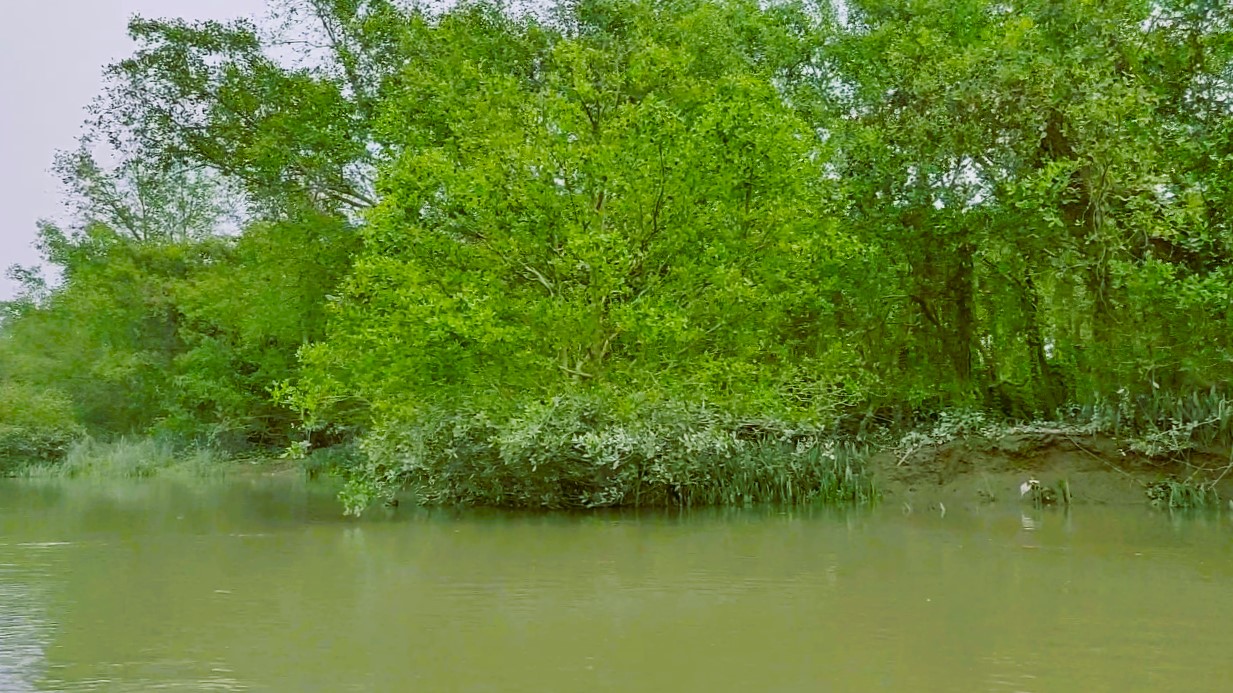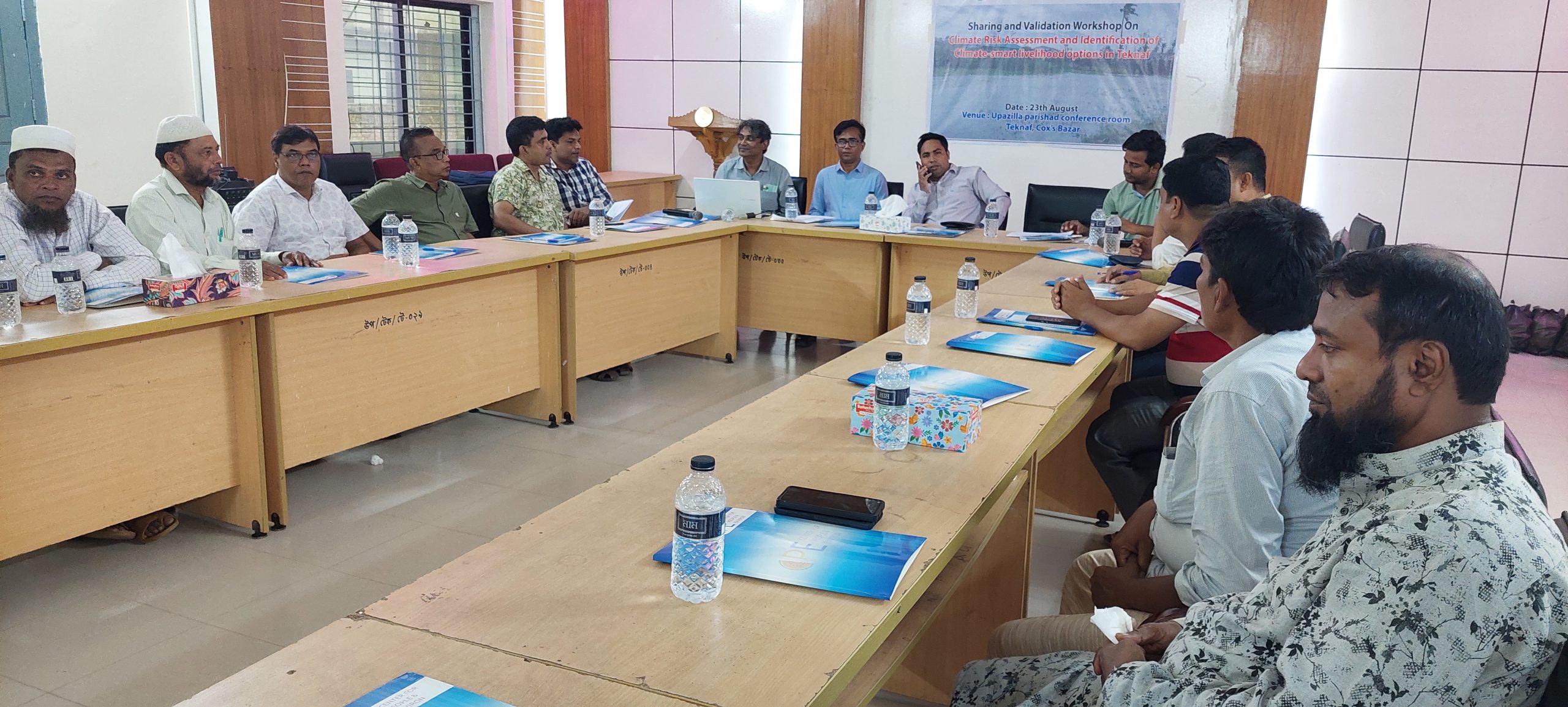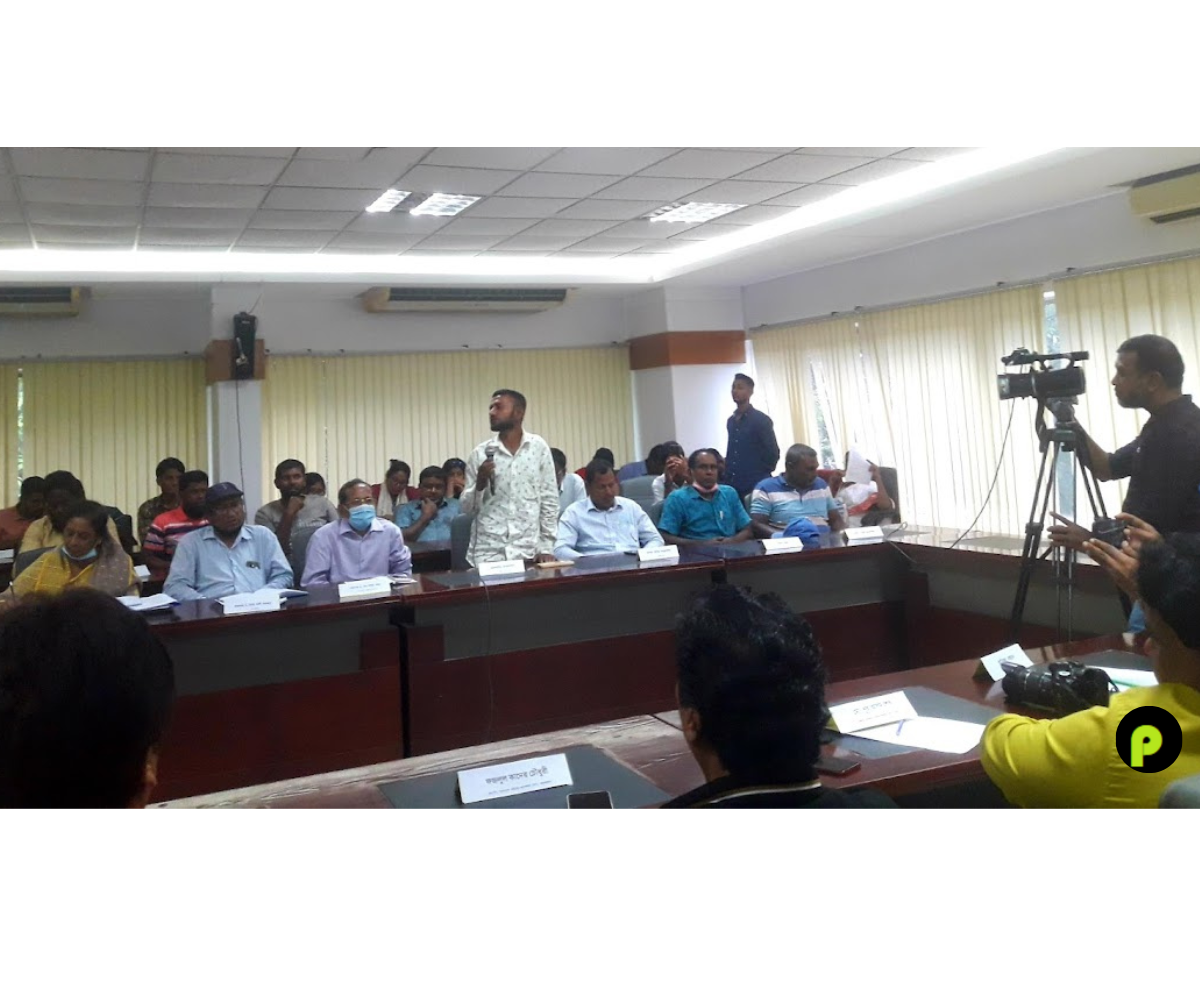
Mangrove Forests Are Expanding Along the Freshwater Halda River!
Shahruk Khan,Md. Rafshan J. Rownak “Our research indicates that the Halda River is not only facing rising salinity levels but is also transforming into a mangrove ecosystem. During our investigations in North Madarsha, West Barighona, and South Madarsha, we observed the formation of sandbanks (chars) in the river’s center, accompanied by the growth of mangrove forests on either side. These forests, which include various Bangladeshi mangrove species like Keora and Hargoza, have an age range of 5 to 15 years” Mangrove forests are naturally taking root along both banks of the Halda River, highlighting the increasing salinity in its waters. Over the last decade, numerous small and large mangrove forests have slowly emerged on either side of the Halda River, and this change has become a familiar sight for the local community. Different species such as Keora (Sonneratia), Hargoza (Acanthus ilicifolius), and even the “White Mangrove” (Laguncularia racemosa), which is indigenous to the West African and Atlantic regions, have been identified along the Halda River. Muhammad Abdur Rahman, Director of the Center for People and Environ and a climate scientist, first observed this change while studying the effects of salinity on the Halda River and exploring mitigation strategies. Following his findings, a comprehensive survey from Madunaghat to Sattarghat along the Halda River uncovered a variety of small and large mangrove forests. A field visit along the Halda River shows rows of Keora trees lining its banks. Conversations with locals reveal that these trees were not planted intentionally but have grown naturally. Locals refer to them as “Kafra trees” in their dialect. It is believed that the seeds of these trees floated in with the tidal currents, got trapped in the silt, and germinated. Among the mangrove trees growing along the Halda River, Keora is the most abundant. These trees thrive in saline soil, and numerous aerial roots (pneumatophores) have been observed at their bases, indicating future forest expansion. Hargoza is another plant found in the region, which typically grows in areas affected by tidal saltwater fluctuations, making it an indicator species of salinity. Experts suggest that wherever saline water and soil exist, Hargoza trees can be found along the banks of rivers, canals, or estuaries. Md. Faruk from Uttar Madarsha’s residence said, “I have been seeing these mangrove forests for a long time. In some areas, they have become so dense that you can’t even enter them. These trees grew naturally over the past 10-12 years. During high tides, saltwater enters the river, especially during cyclones, increasing salinity. No one planted these trees; they grew by themselves from floating seeds.” Md. Khorshed Alam from West Barighona said, “These trees are growing naturally along the riverbanks. We call them ‘Kafra trees’ in our local dialect. They are resilient to water, unlike crops that get destroyed by saltwater. These trees survive year after year, unaffected by prolonged water exposure.” Asu Barua, a fisherman from South Madarsha revels, in front of his house, rows of Keora trees with numerous aerial roots were seen, indicating further natural regeneration. He stated, “I did not plant these trees; they grew on their own. Many have attempted to plant other trees along the river, but those didn’t survive. However, these trees have grown naturally without human intervention.” Further along his home, both Keora and Hargoza trees were observed. Muhammad Abdur Rahman, the climate scientist, confirmed the identification of these species. Similar mangrove forests have been observed in North and South Madarsha, West Barighona, Ramdas Hat, Khalifar Ghona, Rahmat Ghona, Aburkhil, Garduara, Burishchar, Ruhullapur, and to Sattarghat. According to Dr. Mohammad Shafiul Alam, a professor at the Institute of Forestry and Environmental Sciences, University of Chittagong, the presence of Keora and Hargoza trees indicates increasing salinity in the Halda River. He stated,“Normally, these trees cannot survive in freshwater environments. Their presence suggests that the Halda River is experiencing rising salinity, allowing these mangrove species to thrive.” Md. Zainal Abedin, Assistant Conservator of Forests, Chittagong North Forest Division, also confirmed the existence of tidal mangrove trees along the Halda River, He also said, “I have observed three to four types of mangrove species here. These trees likely arrived through tidal currents, as seen in other coastal riverbanks.” Experts emphasize the urgent need to increase the freshwater flow in the Halda River to reduce salinity. They suggest implementing measures to prevent saline water intrusion from coastal tides. Muhammad Abdur Rahman, a climate scientist, remarked, “Our research indicates that the Halda River is not only facing rising salinity levels but is also transforming into a mangrove ecosystem. During our investigations in North Madarsha, West Barighona, and South Madarsha, we observed the formation of sandbanks (chars) in the river’s center, accompanied by the growth of mangrove forests on either side. These forests, which include various Bangladeshi mangrove species like Keora and Hargoza, have an age range of 5 to 15 years.” We discovered the White Mangrove (Laguncularia racemosa), a species primarily native to the West African and Atlantic coasts. This mangrove is seldom found in the Indian Ocean region, occurring mainly in highly saline lagoons along the Indian coastline. White mangrove in Halda River (Photo: Muhammad Abdur Rahaman) “Additionally, we discovered the White Mangrove (Laguncularia racemosa), a species primarily native to the West African and Atlantic coasts. This mangrove is seldom found in the Indian Ocean region, occurring mainly in highly saline lagoons along the Indian coastline.” This research indicates that Bangladesh’s renowned freshwater ecosystem is now shifting towards a mangrove ecosystem. If immediate action is not taken, this transformation will lead to severe consequences. Halda’s historical freshwater ecosystem will be lost, and communities dependent on it including the people of Chittagong, Hathazari, Raozan, and Fatikchhari will face significant threats to agriculture, livelihoods, and public health.”





